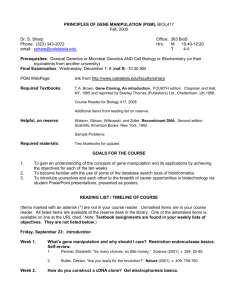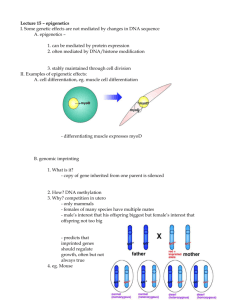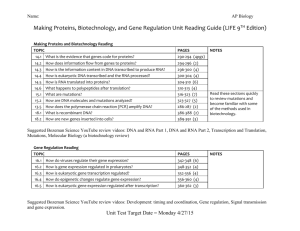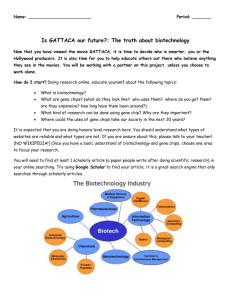Bio Tech Midyear Study Guide The exam consists of ~ 60 multiple
advertisement
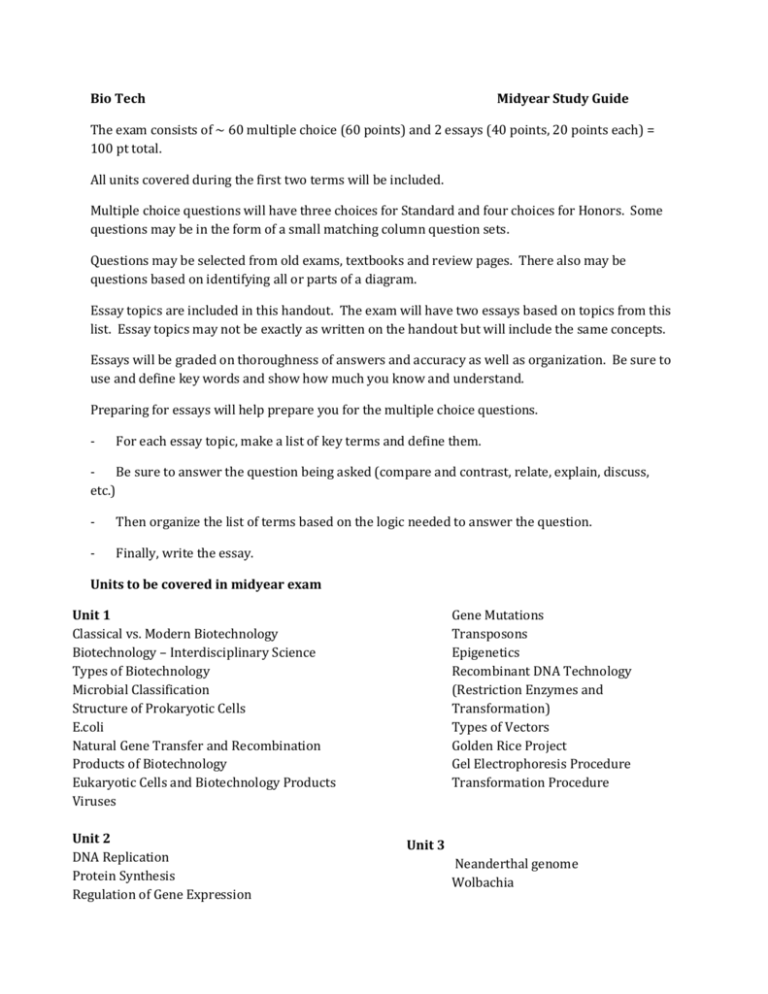
Bio Tech Midyear Study Guide The exam consists of ~ 60 multiple choice (60 points) and 2 essays (40 points, 20 points each) = 100 pt total. All units covered during the first two terms will be included. Multiple choice questions will have three choices for Standard and four choices for Honors. Some questions may be in the form of a small matching column question sets. Questions may be selected from old exams, textbooks and review pages. There also may be questions based on identifying all or parts of a diagram. Essay topics are included in this handout. The exam will have two essays based on topics from this list. Essay topics may not be exactly as written on the handout but will include the same concepts. Essays will be graded on thoroughness of answers and accuracy as well as organization. Be sure to use and define key words and show how much you know and understand. Preparing for essays will help prepare you for the multiple choice questions. - For each essay topic, make a list of key terms and define them. Be sure to answer the question being asked (compare and contrast, relate, explain, discuss, etc.) - Then organize the list of terms based on the logic needed to answer the question. - Finally, write the essay. Units to be covered in midyear exam Unit 1 Classical vs. Modern Biotechnology Biotechnology – Interdisciplinary Science Types of Biotechnology Microbial Classification Structure of Prokaryotic Cells E.coli Natural Gene Transfer and Recombination Products of Biotechnology Eukaryotic Cells and Biotechnology Products Viruses Unit 2 DNA Replication Protein Synthesis Regulation of Gene Expression Gene Mutations Transposons Epigenetics Recombinant DNA Technology (Restriction Enzymes and Transformation) Types of Vectors Golden Rice Project Gel Electrophoresis Procedure Transformation Procedure Unit 3 Neanderthal genome Wolbachia Essays will be chosen from: 1.The sequence below shows a segment of DNA cut by the restriction enzyme HaeIII which cuts between GGCC and CCGG base pairs. 3’ ATGCCGGTGTACCGGTAAGTGTACGACCGGTGATAGATACGG 5’ 5’ TACGGCCACATGGCCATTC ACATGCTGGCCACTAT CTATGCC 3’ Explain the following. a. The mechanism of action of restriction enzymes. b. how the principles of gel electrophoresis allow for the separation of DNA fragments. c. Describe the results you would expect from the electrophoresis separation of fragments from the treatment of the DNA segment above. 2. By using transformation, scientists are able to modify genetic materials so that a particular gene of interest from one cell can be incorporated into a different cell. a. Describe a procedure by which this can be done. b. Explain the purpose of each step of your procedure. c. Describe how you could determine whether the gene was successfully incorporated. d. Describe an example of how gene transfer and incorporation have been used in biomedical or commercial applications. 3. Describe the lac operon and discuss how it explains the control of messenger RNA production and the regulation of protein synthesis in bacterial cells. 4. You wish to grow and identify a particular microorganism. Describe in detail a. How to streak and isolate the organism on an agar plate. b. How to identify colony morphology of the organism c. How to Gram stain and identify the Gram reaction of the organism. 5. Describe the viral life cycle and explain why a virus is so successful at establishing a host infection. 6. A Hox gene named Scr (Sex combs reduced) is important for the development of fly’s first pair of legs and the “sex comb teeth” on them. This gene is repressed in other body segments that include the second and third legs. Sex combs are therefore absent on these legs. Explain a. The concept of epigenetics b. The role of cytosine methylation in cell differentiation. c. The role of histone modifications in cell differentiation.



